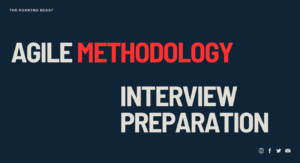In the Scrum framework, there are three primary artifacts: the Product Backlog, the Sprint Backlog, and the Increment. These artifacts play a crucial role in planning, organizing, and tracking the work throughout the project. Let’s delve into each artifact:
Product Backlog:
The Product Backlog is a prioritized and dynamic list of all the features, enhancements, and bug fixes that are required to be developed for the product. It represents the requirements and acts as the single source of truth for the Scrum Team. Key aspects of the Product Backlog include:
- Prioritization: The Product Backlog is ordered based on the value, importance, and dependencies of the items. The Product Owner is responsible for continuously prioritizing and refining the backlog to ensure it reflects the latest understanding of the product.
- User Stories: The items in the Product Backlog are often captured as user stories or other relevant forms, describing the desired functionality from the user’s perspective.
- Estimation: The Product Backlog items may have high-level estimates, such as story points or relative sizing, to provide a rough understanding of the effort required for each item.
- Refinement: The Product Backlog is refined over time through collaborative efforts involving the Product Owner, the Scrum Master, and the Development Team. It is regularly updated based on feedback, changes in requirements, and new insights.
Sprint Backlog:
The Sprint Backlog is a subset of the Product Backlog items that are selected for a specific sprint. It contains the work items (user stories, tasks, or any other relevant work units) that the Development Team commits to completing during the sprint. Key aspects of the Sprint Backlog include:
- Commitment: The Development Team commits to delivering the selected items in the Sprint Backlog by the end of the sprint. This commitment is based on the team’s capacity and velocity, taking into account their historical performance.
- Sprint Goal: The Sprint Backlog is aligned with the sprint goal, which represents the overall objective or target for the sprint. The Development Team collaborates with the Product Owner to define the sprint goal during Sprint Planning.
- Task Breakdown: The items in the Sprint Backlog are broken down into smaller, actionable tasks that define the work required to complete them. The Development Team collaboratively decomposes the items and creates the tasks.
- Ownership: The Sprint Backlog is owned by the Development Team, which is responsible for managing and updating it throughout the sprint. They may add, remove, or reprioritize items as needed during the sprint, in consultation with the Product Owner.
Increment:
The Increment is the sum of all the completed and potentially shippable Product Backlog items at the end of a sprint. It represents the tangible value delivered to the stakeholders. Key aspects of the Increment include:
- Definition of Done: The Increment must meet the Definition of Done, which is a shared understanding of the quality criteria and completeness for each product increment. It ensures that the work meets the required standards and is ready for potential release.
- Demonstration: The Increment is demonstrated to the stakeholders during the Sprint Review, showcasing the completed work items and seeking feedback.
- Continuous Improvement: The Increment serves as a foundation for the subsequent sprints, allowing the product to evolve incrementally based on the stakeholders’ feedback and changing requirements.
These artifacts provide transparency, alignment, and visibility into the work being done and the progress of the project. They facilitate effective planning, collaboration, and decision-making within the Scrum Team and with stakeholders, ensuring that product development remains focused, adaptable, and value-driven.

